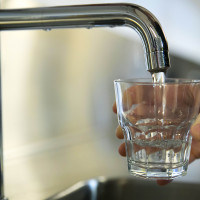Council looks at quicker water bore replacement
Share this story
The Council is set to speed up efforts to replace shallow bores providing drinking water in the Northwest of Christchurch with ones that are deeper.
That is one of the recommendations from today’s Infrastructure, Transport and Environment (ITE) Committee meeting. Head of Three Waters and Waste John Mackie presented a report explaining where the Council sources its drinking water and its monitoring and testing regime.

There are 22 bores in the Northwest catchment supplying about 80,000 people. The shallowest of these is at 16 metres. The deep bores that provide water to other parts of the city are at depths of around 100 metres.
The Council is upgrading the Northwest bores to deeper wells and this work is due to be finished by 30 June 2018. Mr Mackie said it was possible this work could be sped up and the ITE committee has recommended to the Council that this be approved.
The committee has also asked staff to report back to Council to address matters raised in a letter from the Medical Officer of Health.
“We share the Medical Officer of Health’s view that efforts to preserve the health of our community are paramount given we are supplying from an untreated source. “
Mr Mackie said contamination was usually through contaminated water seeping through cracks in the reservoir roof structures.
“We have chlorination equipment on standby and ready to be deployed should the need arise. However, given that it takes 24 hours to confirm contamination through the presence of E.coli there remains a residual risk and the question we have to answer is whether this risk is untenable or does our water management plan adequately cover that.”
The Council was also fast-tracking work to apply a waterproof membrane over reservoirs and well heads to prevent bird droppings and/or water seepage bringing contaminants into the supply.
Read the Infrastructure, Transport and Environment Committee report on water testing and risk mitigation.

